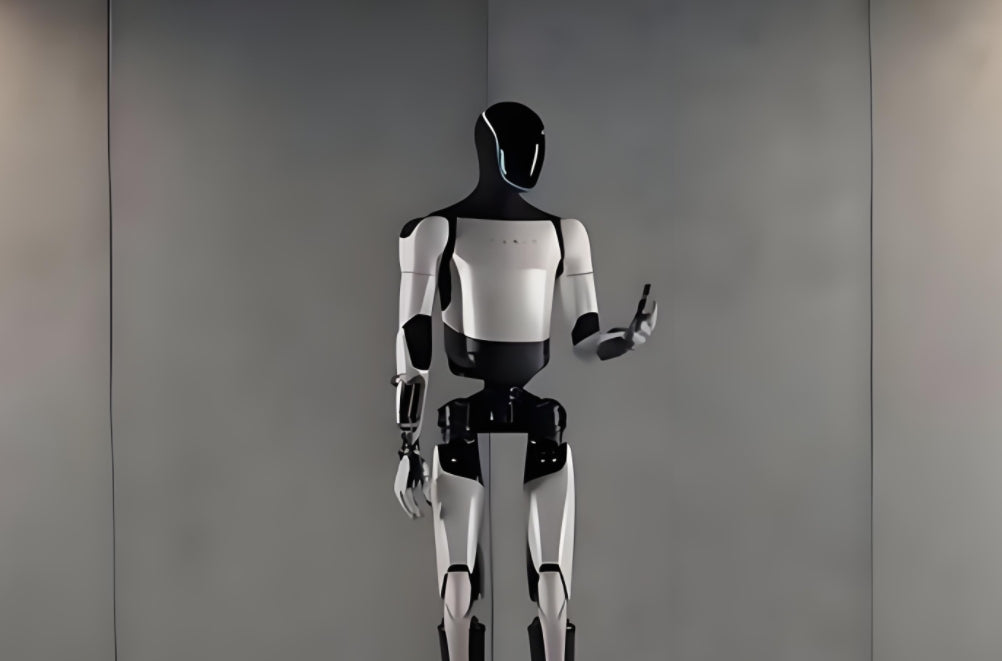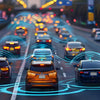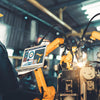Humanoid Robots: Pioneers and Transformative Forces in Future Tech

With the rapid development of artificial intelligence (AI), robotics, computer vision, and deep learning, humanoid robots have transitioned from virtual characters in science fiction films to real-world innovations, gradually carving out a place in various industries. Their ability to mimic and simulate human behaviors and actions has made them invaluable tools in multiple sectors. From healthcare, education, and services to industrial applications and daily life, humanoid robots hold tremendous potential to drive technological advancement and societal change.
Humanoid robots not only exhibit high autonomy and intelligence but also perform complex tasks, interact with humans, and demonstrate exceptional adaptability. Unlike traditional robots that mainly perform fixed, repetitive tasks, humanoid robots collaborate with humans and other machines in dynamic environments, enabling more natural forms of interaction. This enhances work efficiency and improves quality of life.
What is a humanoid robot?
A humanoid robot is a robot that mimics the form and behavior of humans. Typically, these robots have body structures resembling humans, including a head, torso, and limbs, and possess capabilities like walking, running, and hand movements. Humanoid robots integrate technologies such as computer vision, sensors, and AI algorithms to perceive the surrounding environment, make decisions, perform tasks, and interact with humans.
These robots not only offer greater flexibility and adaptability but can also collaborate with humans in complex environments to complete tasks that require decision-making, perception, and action. Humanoid robots are seen as the next step in the evolution of robotics, gradually becoming a part of various industries and transforming modern intelligent societies.

Humanoid Robots: A Revolution Across Industries
1. Healthcare: Assistive Therapy, Health Monitoring, and Caregiving
Humanoid robots play an important role in human health care, especially in an aging society and with the strain on medical resources. These robots, equipped with AI and precise medical sensors, provide patient care, health monitoring, and assistive therapies. For instance, robots can help elderly individuals with daily care, monitor vital signs, remind them to take medications, and assist with mobility. In rehabilitation therapy, robots precisely control and replicate human movements, assisting patients in regaining physical function.
Moreover, some humanoid robots offer emotional companionship to patients, alleviating feelings of loneliness and providing psychological support to those in long-term hospitalization. As technology advances, these robots will continue to play a vital role in both hospital and home care settings.
2. Education: Personalized Teaching and Emotional Interaction
In education, humanoid robots are already helping teachers improve educational quality and provide students with personalized learning experiences. Robots can interact with students, simulate teacher behavior, and even provide emotional support. They can customize lessons based on a student’s learning pace and interests, helping them excel in subjects like language learning, mathematics, and science.
Additionally, robots can simulate various educational scenarios to inspire creative thinking and problem-solving skills. For example, robots may explain complex scientific concepts or simulate historical speeches to enhance students' understanding and engagement with history. Educational robots not only make learning more enjoyable but also help students grasp knowledge more effectively through interactive learning.

3. Service Industry: Enhancing Customer Experience and Interaction
In the service industry, robots are gradually becoming a part of customer reception and service. In hotels, restaurants, and shopping malls, humanoid robots can serve as receptionists, guides, and information providers, interacting with customers through voice, touchscreens, facial expressions, and body language. For instance, robots can assist with quick check-ins, answer customer questions, direct them to destinations, and offer dining or shopping recommendations.
At large exhibitions and commercial events, humanoid robots can act as brand ambassadors, introducing products to visitors and even engaging in deeper interactions with customers, increasing brand exposure and appeal. These robots enhance customer experience by fostering stronger interactions and promoting brand identity.
4. Industry and Automation: Boosting Productivity and Precision
The application of humanoid robots extends beyond the service sector and is increasingly prominent in industrial settings. Humanoid robots can seamlessly integrate with other automation systems and production lines to perform high-precision tasks such as assembly, handling, and inspection. For example, on production lines, robots can mimic human workers’ actions to perform repetitive and precision-demanding tasks, significantly improving production efficiency and accuracy.
Humanoid robots can also replace humans in high-risk environments, ensuring worker safety. Furthermore, their greater flexibility enables them to adapt to different production needs, facilitating the intelligent optimization of work processes.
5. AI and Deep Learning: Driving Intelligent Decision-Making and Accurate Perception
The intelligence of humanoid robots is deeply reliant on AI and deep learning technologies. By integrating computer vision, speech recognition, deep learning algorithms, and other advanced systems, humanoid robots can sense their surroundings in real-time, make quick decisions, and effectively interact with humans. Robots can recognize and understand human speech, facial expressions, and body movements, and even provide emotional feedback.
Deep learning allows robots to improve their task processing capabilities by continuously accumulating data and experiences. As technology progresses, future robots will be able to more accurately perceive environments, analyze data, and make complex decisions. They will not only perform fixed tasks but also adapt flexibly to various complex scenarios in changing environments.

Future Outlook: More Intelligent and Human-Centric Robots
1. Humanoid Robots: The Intelligent Partners of the Future
As technology continues to advance, future humanoid robots will evolve from being mere tools to indispensable companions in daily life and work. With enhanced intelligence and self-learning capabilities, these robots will be better equipped to adapt to complex environments and ever-changing needs.
2. Healthcare: Smart Care and Personalized Health Management
In the healthcare sector, humanoid robots will provide more precise diagnoses and personalized caregiving services. They will assist elderly individuals and patients with emotional companionship and daily care, alleviating the global strain on healthcare resources.
3. Education: Customized Smart Teaching
Humanoid robots will play an important role in education, offering tailored teaching solutions based on each student’s learning progress and interests, helping them master knowledge, foster creative thinking, and improve the efficiency and quality of education.
4. Service Industry: Natural Interaction and Enhanced Customer Experience
In the service industry, robots will have advanced speech recognition and facial expression analysis capabilities, enabling more efficient interaction with customers. This will enhance customer experiences, strengthen brand-consumer connections, and provide personalized services.
5. Industrial Production: Efficient Automation and Production Optimization
In industrial production, humanoid robots will go beyond simple tasks and leverage data analysis to optimize production processes, improving overall efficiency. They will replace humans in high-risk and complex environments, ensuring worker safety and enhancing production performance.
6. Human-Centric Services: Emotional Understanding and Smart Collaboration
Future humanoid robots will focus more on emotional understanding and develop deep emotional interactions with humans. They will provide emotional support in elderly care, psychological therapy, and more, becoming truly caring "smart companions."
7. Security and Privacy Protection: Solving Ethical and Privacy Issues
With continued technological advancement, humanoid robots will gradually resolve current security, privacy, and ethical concerns, ensuring widespread acceptance and application in society.
8. Future Vision: The Core Force of an Intelligent Society
In the future, humanoid robots will drive the intelligent transformation of various industries, improving efficiency and quality of life. They will contribute to the creation of an intelligent, convenient, and sustainable future society, becoming a critical force in social change.
Conclusion: Technology Changing the Future
As an essential part of future technology, humanoid robots' intelligence and automation make them powerful engines for innovation and transformation across multiple fields. From healthcare and education to industrial production, humanoid robots will be widely applied worldwide, enhancing human life with more efficient and convenient experiences. As technology continues to develop and application areas expand, humanoid robots will play an integral role in the upcoming technological revolution.




